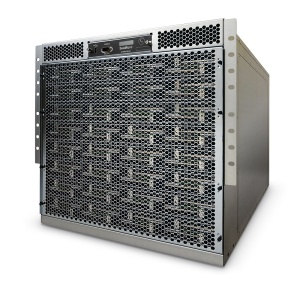SeaMicro swaps out Atoms for Xeons in microserver

SeaMicro has boosted the processing power of its dense server architecture by replacing Atom chips for more capable Xeons.

The SM10000-XE uses Xeon rather than Atom processors. Image credit: SeaMicro
The SM10000-XE sees SeaMicro cram 64 quad-core Xeon E3 processors into its dense, power-efficient server. The server stands 10U (10 rack units) high and is aimed at major websites, the defence industry and academic researchers.
"What we're announcing today is an extension of SeaMicro... to address the entire scale-out datacentre," the company's chief executive Andrew Feldman told a press briefing on Tuesday. "[This is] the mainframing of the microserver."
Each server consists of 64 motherboards packed into a compact lattice formation. Each board has 10Gb Ethernet trans-server bandwidth available to the socket, up to 32GB of DDR ECC (error correction code) memory, along with a SeaMicro ASIC (application specific integrated circuit) that helps pass information around the server.
Storage takes the form of 2.5-inch hard-disk drives or solid-state drives. A server can have between zero and 64 drives, with hard-disk drive capacities topping out at 1TB and solid-state drives at 300GB.
By using the Sandy Bridge-based Xeon E3 processers, the microservers can deal with more-complex jobs than their Atom-powered predecessors can, Feldman said. These include tasks such as supporting MySQL and NoSQL databases, or running applications made in Java or PHP, he said.
SeaMicro's design gets rid of lots of components typically found in motherboards, such as fans, controllers, discs and dedicated BIOS chips. Feldman described these components as "mini-vampires" that use a lot of power.
The server consumes 3.5KW of power when running at full load. This equates to around 55W per socket. Each E3-1260L processor uses around 45W of power, so SeaMicro has shrunk the amount of power necessary to run the processor to 10W. This compares with a processor overhead of around 64W on a Dell PowerEdge R815 equipped with four 12-core 115W TDP AMD Opteron processors.
SeaMicro is the first company to create a server that can support Atom or Xeon in the same architecture, according to Jason Waxman, general manager of Intel's high density computing group.
The server costs around $138,000 for a basic configuration, SeaMicro said, and is available in the US. It did not respond to a request for information on the SM10000-XE's availability in the UK.